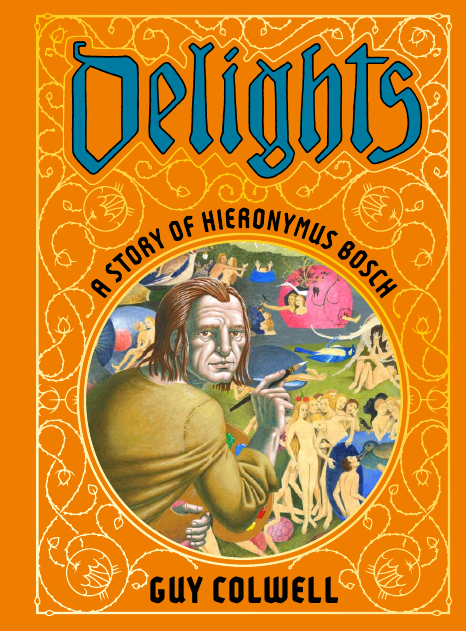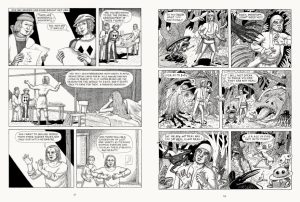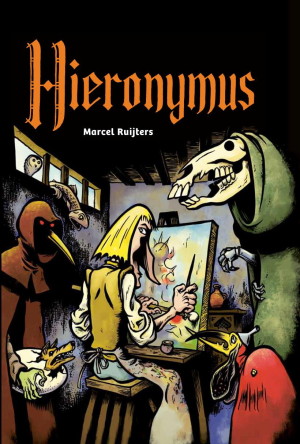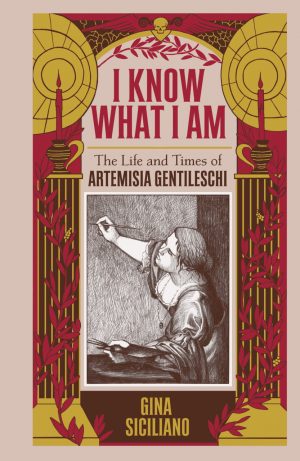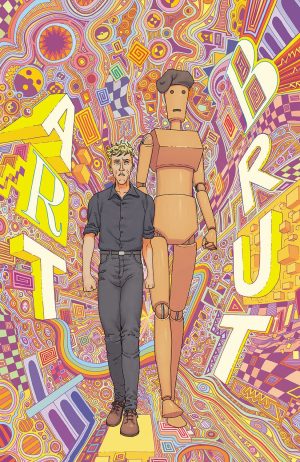Review by Ian Keogh
The paintings of Hieronymus Bosch astound each new generation that discovers them, and because the known details of his life are so minimal and his paintings so visionary, interpretation is all. His most famous work, The Garden of Earthly Delights defies categorisation and prompts endless interpretation, and the tryptich has fascinated painter and comic creator Guy Colwell for decades. Delights is his largely fictional presentation of Bosch during the period when the painting was created.
As so little is known of the creation, Colwell presents informed speculation throughout, with contemporary morality a constant consideration. When the painting is commissioned Bosch and his sponsor engage in theological debate regarding the appropriateness of naked people in Biblical terms. He’s caught between the suggestions of the sponsor’s nephew Hendrik to be more daring and a fear of angering the pious. In an era where the church held immense power, a careful line needed to be trodden between what could be justified as viable Biblical interpretation and condemned as immorality. The rich and ennobled feared the wrath of the church less than the poor and deprived, making for uncomfortable reading as the feeling is given that Hendrik would have no hesitation in throwing Bosch under the carriage if an ecclesiastical conflict develops.
A problem regarding female models prompts a horrible moment by today’s standards, but historically viable in an era of serfs and servants, and the appropriateness of nudity and eventually people enjoying their bodies dominates for a fair period. Colwell underlines how Bosch needed to be very wary of reactions in conservative times, yet Hendrik keeps wanting boundaries breached.
The prevailing discomfort is accompanied by illustrations reflecting those of Bosch’s era rather than conforming to current standards of representation. For much of Delights there’s a simplicity to surroundings and people, as it’s not just the models who are posed, but Cowell becomes more expansive when introducing the common theory of Bosch having visions. This is credited for the more astounding inclusions, yet might Bosch not just have had a prodigious and surreal imagination? Colwell introduces skilled representations of these bizarre creatures as manifestations of Bosch’s inner turmoil about what he’s being pushed into creating. It’s an intelligent lead into the use of symbolism as explained by Colwell through Bosch. Even more cleverly, Colwell stages The Garden of Earthly Delights as a gateway to more indulgent times from a period of church authority. A compromise reached delivers the painting as it’s known today, a stunning tryptich.
While Delights is speculation throughout, it’s based on a period realism, but at the end Colwell takes it a little too far. Having Bosch imagining the future where the church influence has entirely waned and noting fallacies within the Bible is highly unlikely in an era where heresy could still be punished by death and eternal damnation was a very real fear.
An unsatisfactory conclusion is a small flaw in an enlightening consideration of Bosch facing torments not far removed what’s depicted in his painting. Colwell depicts a anguished craftsman being prodded beyond his comfort zone to create a work of genius, and his informed interpretation has a strength of its own.
